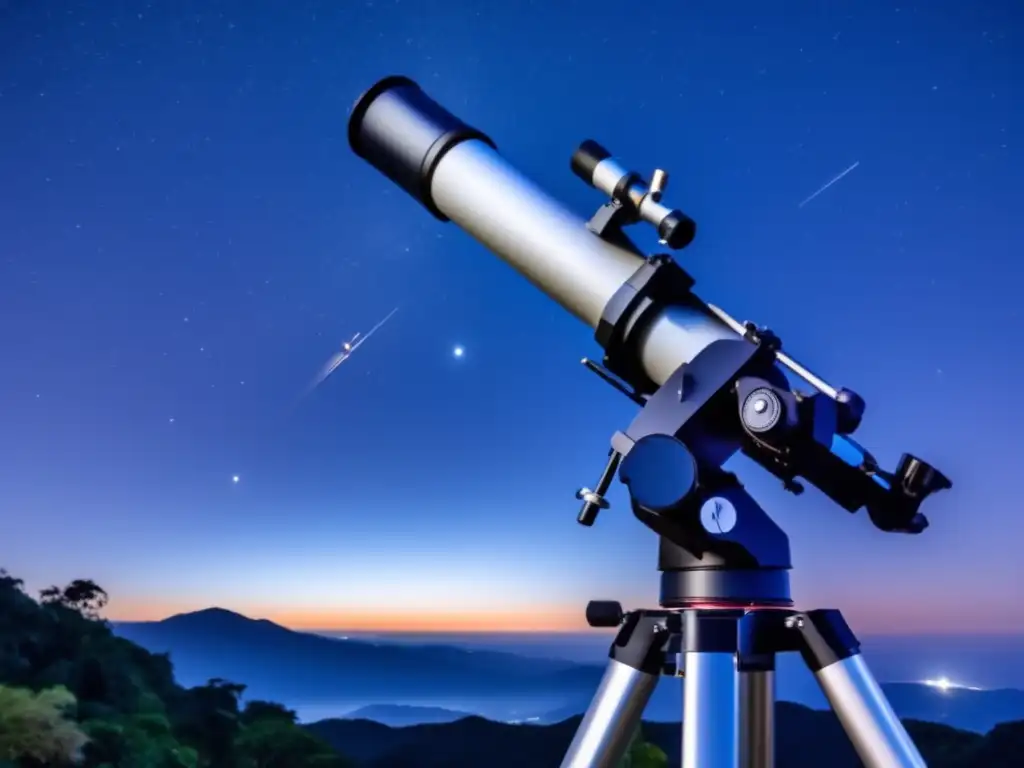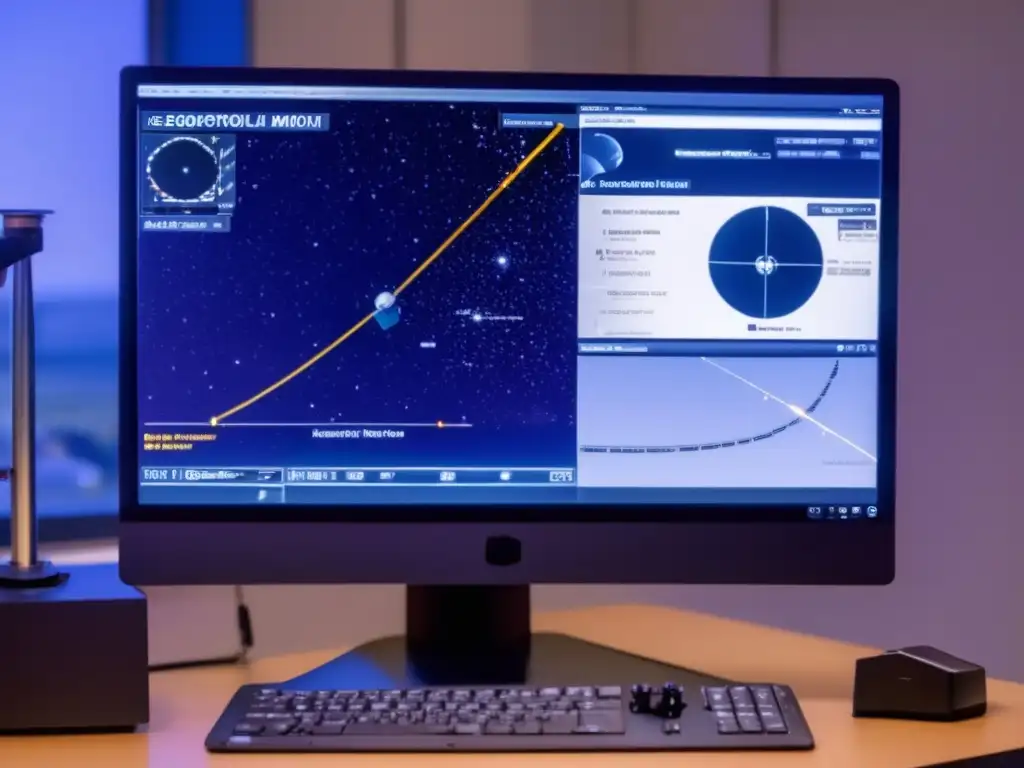How To Use An Equatorial Mount For Asteroid Tracking

Introduction
Asteroids are fascinating celestial objects that have captured the attention and curiosity of scientists and enthusiasts alike. Tracking and observing asteroids can provide valuable insights into their composition, behavior, and potential impact on Earth. One essential tool for accurate asteroid tracking is an equatorial mount. In this article, we will explore how to effectively use an equatorial mount to track and observe asteroids.
The Basics of Equatorial Mounts

Understanding Equatorial Mounts
Equatorial mounts are designed to align with the axial tilt of the Earth, allowing for smooth and precise tracking of celestial objects as they appear to move across the sky. They consist of two main components: a declination axis and a right ascension axis.
Setting Up an Equatorial Mount
Before using an equatorial mount for asteroid tracking, it is crucial to set it up correctly. Begin by finding a stable surface and ensuring the mount's tripod or base is level. Next, align the mount's polar axis with the celestial pole. This can be done by using a compass to locate the north star, Polaris, in the Northern Hemisphere, or the south celestial pole in the Southern Hemisphere.
Aligning the Mount with Asteroid Coordinates
Once the equatorial mount is properly set up, it needs to be aligned with the coordinates of the specific asteroid you wish to track. This data can be obtained from reliable sources such as NASA's Jet Propulsion Laboratory (JPL) website or specialized tracking software. Enter the asteroid's right ascension and declination values into the mount's control panel or hand controller to align it accurately.
Tips for Effective Asteroid Tracking

Optimizing Observing Conditions
Clear and dark skies are essential for effective asteroid tracking. Choose observing locations away from light pollution and adverse weather conditions. Additionally, consider the moon's phase, as bright moonlight can interfere with observations. Aim for nights with minimal lunar illumination or wait for the moon to set before beginning your tracking session.
Using Appropriate Tracking Speeds
Asteroids move at different speeds across the sky, so it is crucial to adjust the tracking speed of your equatorial mount accordingly. Depending on the asteroid's orbital path and distance from Earth, you may need to use sidereal or lunar tracking modes. Sidereal tracking matches the rotation of the Earth, while lunar tracking compensates for the moon's orbital motion.
Tracking Multiple Asteroids
If you wish to track multiple asteroids during a single observing session, ensure that your equatorial mount allows for easy switching between coordinates. Some mounts offer pre-programmed asteroid catalogs, making it easier to transition between different objects without requiring manual input of new coordinates each time.
Frequently Asked Questions
-
Question 1: How accurate is an equatorial mount for asteroid tracking?
An equatorial mount, when properly aligned and calibrated, can provide highly accurate tracking for asteroid observations. However, it is essential to periodically check and adjust the alignment as needed.
-
Question 2: Can I track asteroids with a non-equatorial mount?
While it is possible to track asteroids using other types of mounts, such as alt-azimuth mounts, equatorial mounts offer the most precise and effortless tracking experience specifically designed for celestial objects.
-
Question 3: Can I track asteroids using a telescope without a mount?
Tracking asteroids without a mount can be challenging due to their fast apparent movement across the sky. However, with careful manual adjustments and constant observation, it is still possible to track them, albeit not as accurately as with an equatorial mount.
-
Question 4: Are equatorial mounts suitable for astrophotography of asteroids?
Equatorial mounts are commonly used for astrophotography, including capturing images of asteroids. With the ability to track celestial objects smoothly, they provide stable platforms for long-exposure photography, allowing detailed imaging of asteroids.
-
Question 5: Where can I find software or apps to calculate asteroid coordinates for my equatorial mount?
Several software programs and mobile apps are available that provide real-time asteroid positions and coordinates, compatible with equatorial mounts. Some popular options include Stellarium, SkySafari, and Cartes du Ciel.
Conclusion
Using an equatorial mount for asteroid tracking is an invaluable tool that allows enthusiasts and scientists to observe and study these intriguing celestial objects accurately. By understanding the basics of equatorial mounts, aligning them correctly, and optimizing observing conditions, you can enhance your asteroid tracking experiences and contribute to the ever-expanding knowledge of our universe.
We hope this guide has provided valuable information on using equatorial mounts for asteroid tracking. Remember to share your thoughts and experiences in the comments section below. Consider subscribing to www.asteroidrealm.com for more in-depth articles and follow us on social media to stay updated on the latest discoveries and advancements in asteroid research. Thank you for joining us on this journey through the fascinating world of asteroids!
Additional Resources

For further reading on asteroid tracking and related topics, check out the following resources:
- NASA's Official Website
- NASA Jet Propulsion Laboratory
- Stellarium Software
- SkySafari Mobile App
- Cartes du Ciel Software
 Telescope Eyepieces: Which Is Best For Asteroid Observation?
Telescope Eyepieces: Which Is Best For Asteroid Observation? Practical Guide: Understanding Asteroid Magnitudes For Observation
Practical Guide: Understanding Asteroid Magnitudes For Observation The Impact Of Light Pollution On Asteroid Observation
The Impact Of Light Pollution On Asteroid ObservationIf you want to discover more articles similar to How To Use An Equatorial Mount For Asteroid Tracking, you can visit the Telescopes and Asteroid Observation category.
Leave a Reply

Articulos relacionados: